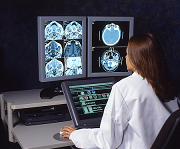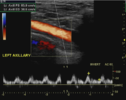By this time, most people working in healthcare are already aware of the deadline to begin using ICD-10-CM in place of ICD-9-CM for reporting diagnoses to Medicare on October 1, 2015. Healthcare Administrative Partners has previously posted information to help radiology practices prepare, and this new series of articles is designed to help radiologists fine-tune their documentation to assure the best coding and uninterrupted reimbursement under ICD-10. One of the major areas of concern for radiologists is in the description of pain for proper diagnosis coding. A survey of historical coding by radiology practices showed that 17 of the 100 most commonly used ICD-9 diagnoses were related to pain.
Preparing Your Radiology Practice for the ICD-10 Transition - How to Document Pain on August 27, 2015
Categories: radiology reimbursement, radiology documentation, icd-10
Learn the Proper Documentation for 3D Reconstruction to Maximize Radiology Practice Reimbursement on August 4, 2015
The use of 3D reconstruction CT scans is common in radiology practices for various exams. Understanding when and how to document 3D recon CT is crucial for proper billing. In some cases it is a minimum requirement in order to bill for the exam that was intended, while in other cases it will garner extra reimbursement. Either way, it must be specifically documented in order for coders to properly bill for the procedures. In this article we will review the financial reasons for providing good documentation, identify when 3D reconstruction is required and when it is an additional charge, and finally understand the documentation requirements that will provide the maximum reimbursement in these various circumstances.
Categories: radiology documentation, CT imaging, 3D reconstruction, CT angiography
Reimbursement rates for both Breast Ultrasound and Digital Breast Tomosynthesis (DBT) received a boost from the Centers for Medicare and Medicaid Services (CMS) this year. Medicare adopted new CPT1 coding that provides enhanced reimbursement for ultrasound services, and coverage was newly approved for DBT as an add-on to screening and diagnostic mammography examinations. These changes were described in our article, The Impact of Coding Changes on Radiology Practices in 2015. In order to fully realize the benefit of these new billing opportunities, proper documentation is required within radiology practices.
Categories: radiology documentation, medicare reimbursement, breast imaging
Conduct a Gap Analysis to Get Your Radiology Practice ICD-10 Ready on March 25, 2015
Will you have to be ready to use ICD-10 coding by October 1, 2015? The answer is: "perhaps". Current law says that this will be the earliest date for its implementation. CMS, the Centers for Medicare and Medicaid Services, has stated that there will be no further extensions. And, at the time of this writing, there is no indication that an ICD-10 extension will be included as part of legislation that would also extend the current Medicare fee schedule beyond its planned March 31st expiration, but this could change as negotiations continue in Washington this week.
As we have reported in a previous article, there are many good reasons to prepare for ICD-10 even if the Medicare program never requires it to be used! The key to readiness is to improve clinical documentation so that the coding and billing team can do the best job possible to maximize your practice reimbursement, and this approach will also help improve your billing immediately.
Categories: radiology reimbursement, radiology documentation, icd-10
Duplex Doppler Ultrasound Tips to Help Maximize Radiology Reimbursements on February 26, 2015
Good documentation is the key to optimal coding and reimbursement for radiology procedures. By including all of the essential elements in the radiology report, physicians give their coders all of the information they need to get the billing done most efficiently. But when the report lacks some required piece of data, the coders must contact the radiologist for clarification. At best, this slows down the billing process but, at worst, it leads to under-coding and therefore lower payment than is possible for the procedure.
Categories: radiology reimbursement, radiology documentation
Why Radiology Practices Should Not Stop Preparing for ICD-10 on August 12, 2014
The Centers for Medicare and Medicaid Services (CMS) said unequivocally that October 1, 2014 would be the date for mandatory implementation of the ICD-10 coding system and that there would be no further delays. CMS was overruled, however, with the signing of the Protecting Access to Medicare Act of 2014 (PAMA) on April 1, 2014, which directed that CMS could not adopt ICD-10 any earlier than October 1, 2015. Now that CMS has confirmed this revised start date in the Federal Register, radiology practices should not delay their preparations for the transition. Here are four steps your radiology practice can take to keep moving ahead with plans to be ready for ICD-10.
Categories: radiology documentation, radiology coding, icd-10
Managing Communication in Radiology Coding to Improve Reimbursement on February 13, 2013
Clinical documentation is the foundation of the health record, while the conversion of this narrative description into codes serves as the basis for reimbursement, quality reporting and other administrative and research activities. While documentation is often adequate from a clinical perspective, payer requirements, quality programs and government regulations often dictate specific requirements for reimbursement.
Categories: radiology reimbursement, radiology billing, radiology documentation, radiology coding, physician query
Improve Radiology Charge Capture for Financial Health on October 17, 2012
It seems like a simple premise: Identify the services provided, substantiate the reason, interpret your findings, bill the payer and receive compensation per your contract. However, charge capture in radiology is anything but simple, especially in a hospital. Considering the high volume of procedures performed, coupled with multiple departments, personnel and IT systems involved in the process, there’s plenty of opportunity for error.
Categories: radiology reimbursement, radiology documentation, radiology charge reconciliation, radiology charge capture











